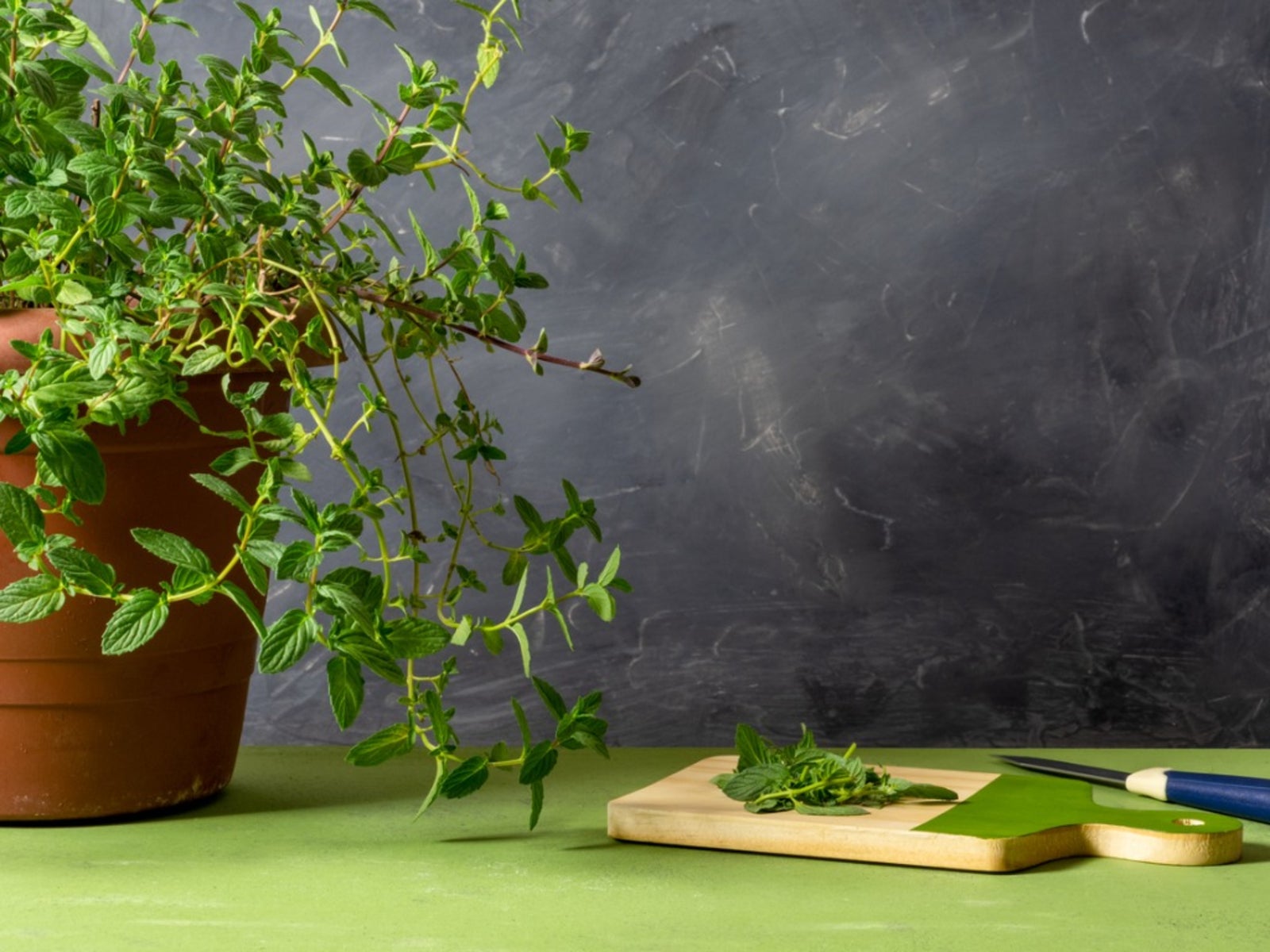Growing Mint Inside: Information On Planting Mint Indoors


Lots of people grow mint out in the garden and for those who know just how vigorous this herb plant is, then it's no surprise to learn that it thrives easily in a potted environment just as well. In fact, not only can it grow happily in the garden and in pots, but growing mint indoors can also be achieved.
How to Grow Mint Indoors
Growing and planting mint indoors is easy. You can find mint growing indoors in a pot of soil or even in a bottle of water. For starters, you need a container with adequate drainage for healthy plant growth. Pot up your mint plant with a good potting mix, either a regular commercial type or one with equal amounts of sand, peat, and perlite mixed in. Water the mint plant well after planting and place it in an area with indirect light, preferably an east-facing window during spring and summer or a west or south-facing one in fall and winter. You'll also want to locate your mint plant in an area with an indoor temperature of around 65 to 70 degrees F. (18-21 C.) during the day and 55 to 60 degrees F. (13-15 C.) at night. If you wish to grow mint plants in water, simply take tip cuttings of about 5 to 6 inches (13-15 cm.) in length from an established mint plant. Remove the bottom leaves and place the cuttings in a water-filled glass or bottle. Set this in a sunny window with at least four to six hours of light each day.
Care for Mint Growing Indoors
When growing mint inside, there are a few things necessary for its continual care. One is watering. These plants prefer to be kept moist but not overly wet. If the upper part of soil becomes dry to the touch, then watering is needed. Otherwise, try to keep it evenly moist. Humidity is another important factor, so mist the plant between watering or set the container on a water-filled tray of pebbles. In addition, you should rotate the plant every three to four days or so to maintain a more even appearance, as plants tend to bend towards the light, becoming somewhat lopsided. If desired, you can move your mint outdoors for summer too. While fertilizing isn't a must with this plant, you can give it an occasional dose of all-purpose, water soluble fertilizer or fish emulsion. Mix the fertilizer at half strength. Don't over fertilize, as this can cause the herb to lose its flavor.
Sign up for the Gardening Know How newsletter today and receive a free copy of our e-book "How to Grow Delicious Tomatoes".

Nikki Tilley has been gardening for nearly three decades. The former Senior Editor and Archivist of Gardening Know How, Nikki has also authored six gardening books.